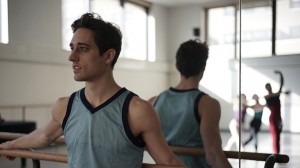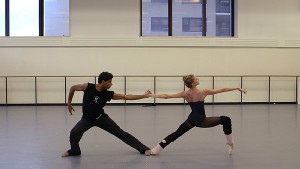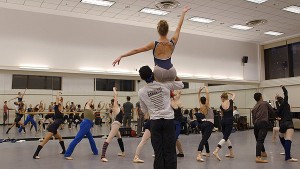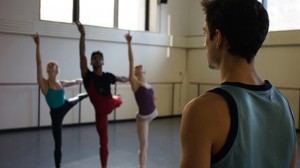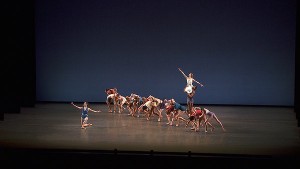PASSIVE APPROACH MAKES FOR SUPERFICIAL DOCUMENTARY
We are a fly on the wall in Jody Lee Lipes’ documentary Ballet 422, which follows 25-year-old New York City Ballet (NYCB) dancer and emerging choreographer Justin Peck as he stages his first ballet for that company. From first rehearsal to world premiere, there are no talking heads, no narration, and no interviews. Except for three title cards in the beginning all we know is what is captured by Mr. Lipes’ wandering camera. With the majority of documentarians doing what amounts to TV reportage, Mr. Lipes’ apparent intention to make his project purely cinematic is refreshing and admirable. Unfortunately, his film is a perfect illustration of why so many directors choose to tell their stories the other way.
Having your subject explain himself to the camera is much easier and cheaper than following him around day and night trying to capture on film those telling details of his life which can then be weaved into a dramatic visual narrative that explores his character and his struggle. It is the critical absence of such details in Mr. Lipes’ film that keeps Ballet 422 from leaping.
The mostly wide shots’”competent but not particularly fascinating or cinematic’”become tiresome after 15-20 minutes, by which point we feel we have seen all Ballet 422 has to offer. Mr. Lipes shows everything to us from one perspective, in the sense that we never get to see his subjects as three-dimensional beings; there is no depth to them.
Part of this feels like it might have been a limitation placed on Mr. Lipes by NYCB, and one result is a document that lacks candor. The other is that the people being filmed’”men and women who have all achieved some remarkable things’”appear seemingly ordinary and dull. It’s doubtful this is true, but we wouldn’t know; we never get to see their remarkable sides. As such, there is no real emotional connection to anyone on the screen. So even though we understand the pressures and difficulties on Mr. Peck’s shoulders intellectually, we never feel their weight, and consequently don’t really care.
One element of working at the NYCB which Mr. Lipes does capture is the nauseating amount of diplomacy that goes into every single tiny little interaction at that place. But as there is no counterpoint to these public interactions’”no one says privately something like, “That so-and-so, she’s such a pain”’”we never know if the film is criticizing this aspect of life at the Ballet or if this is something the camera just happened to capture. Mr. Lipes’ documentary has no point of view, no voice. And while ballet lovers may appreciate the superficial glimpse backstage, film lovers are out of luck on this one.
photos © Magnolia Pictures
Ballet 422
Magnolia Pictures
2014 | 72 minutes | USA
in limited release
New York (Feb 6); L.A. (Feb 13, 2015)
followed by a national rollout

